Superfund Sites in Reuse in Indiana
If you are having trouble viewing the map in your browser, click the 'View larger map' link below
American Chemical Service, Inc.
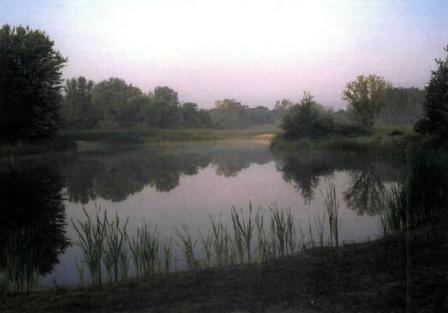 American Chemical Service, Inc.The 23-acre American Chemical Service, Inc. Superfund site is located in Griffith, Indiana. A solvent recovery firm, a chemical manufacturer and a chemical drum reconditioning business operated on site. Improper chemical waste disposal practices contaminated groundwater, surface water and soil. EPA added the site to the Superfund program’s National Priorities List (NPL) in 1989. Cleanup activities included treatment of groundwater and contaminated soil and sediment, as well as removal of chemical drums and debris. Long-term groundwater and well monitoring continue. The American Chemical Service continues to manufacture specialty chemicals on 15 acres of the site.
American Chemical Service, Inc.The 23-acre American Chemical Service, Inc. Superfund site is located in Griffith, Indiana. A solvent recovery firm, a chemical manufacturer and a chemical drum reconditioning business operated on site. Improper chemical waste disposal practices contaminated groundwater, surface water and soil. EPA added the site to the Superfund program’s National Priorities List (NPL) in 1989. Cleanup activities included treatment of groundwater and contaminated soil and sediment, as well as removal of chemical drums and debris. Long-term groundwater and well monitoring continue. The American Chemical Service continues to manufacture specialty chemicals on 15 acres of the site.
For more information:
Columbus Old Municipal Landfill #1
The 19-acre Columbus Old Municipal Landfill #1 (OCL) Superfund site is located in Columbus, Indiana. From 1938 until 1966, the City of Columbus operated the site as an unpermitted municipal landfill. The unlined landfill accepted household wastes, as well as materials from some industrial sources. Waste disposal in the unlined landfill resulted in contamination of groundwater, soil and sediments. In 1986, EPA placed the site on the Superfund program’s National Priorities List (NPL). The City of Columbus hoped to relocate a portion of State Highway 46 into downtown Columbus. The City’s plan included a road across the landfill and a new bridge across the East Fork of the White River next to the site. EPA’s cleanup plan made sure that the construction would not cause further contamination at the site. The plan included installing fencing with warning signs, inspecting and maintaining the landfill cover, installing additional groundwater monitoring wells, monitoring groundwater, and restricting land and water use at the site. The site’s potentially responsible parties conducted cleanup with oversight provided by the Indiana Department of Environmental Management. The City of Columbus completed the road and bridge project in 1999.
For more information:
Conrail Rail Yard (Elkhart)
The Conrail Rail Yard (Elkhart) Superfund site occupies 2,500 acres in Elkhart, Indiana. The site includes a rail yard, a drag car racing strip and other areas impacted by contamination. In 1956, the 675-acre Rail Yard Area began operating. Operations of the rail yard transferred to Conrail in 1976 and to Norfolk Corporation in 1999. Past activities and spills of chemicals on site resulted in contaminated groundwater. EPA added the site to the Superfund program’s National Priorities List (NPL) in 1990. Cleanup activities included providing affected residents with an alternate drinking water source, containing and monitoring contaminated groundwater and sampling for chemical vapors in residences. Where sampling identified chemical vapors in homes, Conrail installed basement-venting units. Norfolk Southern Corporation continues to operate the rail yard at the site. The rail yard serves as a classification distribution yard for freight cars. Rail car repair, engine cleaning and diesel refueling facilities are also located at the yard. The Osceola Dragway continues to operate as a commercial drag racing facility.
For more information:
Continental Steel Corp.
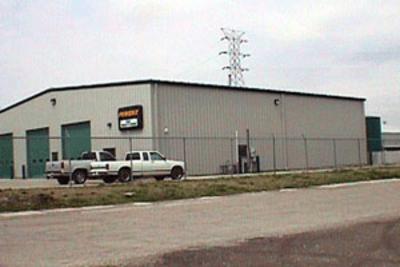 Continental Steel Corp.From 1914 to 1986, the 183-acre Continental Steel Superfund site was an active steel manufacturing facility that made metal products. The plant’s steel manufacturing operations included handling, storage and disposal of hazardous materials. In 1986, Continental Steel went bankrupt. The company left the property in Kokomo, Indiana, contaminated with chemicals including solvents and lead. In 1989, EPA added the site to the Superfund program’s National Priorities List (NPL). As cleanup began, EPA, the State, the community and local developers started working to return portions of the site to productive use. Shortly after cleanup began, a local florist began using an on-site warehouse. A construction company purchased a portion of the property to store construction equipment. EPA also worked with the community to evaluate reuse opportunities in 2001. Part of the cleanup effort allowed the City of Kokomo to move forward with a stormwater project, which uses the on-site quarry as a stormwater retention/detention basin. The City worked with Howard County to obtain and relocate fill material from an area that had poor drainage, thereby saving the City and County thousands of dollars. In 2009, the site received American Reinvestment and Recovery Act (ARRA) funding to support cleanup actions related to the groundwater and slag processing area. These funds accelerated cleanup efforts. The groundwater extraction system began operating in 2011. Three on-site wind turbines produce enough energy to offset at least half of the energy needed for continued groundwater treatment. The City of Kokomo also operates a wastewater treatment plant on site. Reuse efforts at the site continue. In 2006, representatives from Indiana’s Department of Environmental Management and EPA met with Congressman Chocola and the Mayor of Kokomo to announce a $1 million redevelopment grant. The Community-based Redevelopment Plan presented at this event called for retail space, as well as recreational areas with sports fields and facilities. The City has begun construction of a soccer field complex at the former Acid Lagoon Area and will continue working to develop the recreational fields.
Continental Steel Corp.From 1914 to 1986, the 183-acre Continental Steel Superfund site was an active steel manufacturing facility that made metal products. The plant’s steel manufacturing operations included handling, storage and disposal of hazardous materials. In 1986, Continental Steel went bankrupt. The company left the property in Kokomo, Indiana, contaminated with chemicals including solvents and lead. In 1989, EPA added the site to the Superfund program’s National Priorities List (NPL). As cleanup began, EPA, the State, the community and local developers started working to return portions of the site to productive use. Shortly after cleanup began, a local florist began using an on-site warehouse. A construction company purchased a portion of the property to store construction equipment. EPA also worked with the community to evaluate reuse opportunities in 2001. Part of the cleanup effort allowed the City of Kokomo to move forward with a stormwater project, which uses the on-site quarry as a stormwater retention/detention basin. The City worked with Howard County to obtain and relocate fill material from an area that had poor drainage, thereby saving the City and County thousands of dollars. In 2009, the site received American Reinvestment and Recovery Act (ARRA) funding to support cleanup actions related to the groundwater and slag processing area. These funds accelerated cleanup efforts. The groundwater extraction system began operating in 2011. Three on-site wind turbines produce enough energy to offset at least half of the energy needed for continued groundwater treatment. The City of Kokomo also operates a wastewater treatment plant on site. Reuse efforts at the site continue. In 2006, representatives from Indiana’s Department of Environmental Management and EPA met with Congressman Chocola and the Mayor of Kokomo to announce a $1 million redevelopment grant. The Community-based Redevelopment Plan presented at this event called for retail space, as well as recreational areas with sports fields and facilities. The City has begun construction of a soccer field complex at the former Acid Lagoon Area and will continue working to develop the recreational fields.
For more information:
Galen Myers Dump/Drum Salvage
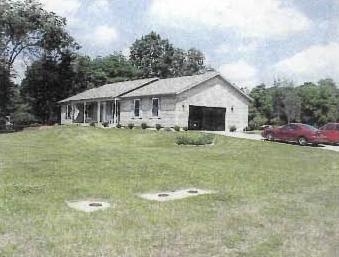 Galen Myers Dump/Drum SalvageThe 5-acre Galen Myers Dump/Drum Salvage Superfund site is located in St. Joseph County, Indiana. From 1970 to 1983, the dump accepted 55-gallon steel drums. Dump operators emptied the collected drums by spilling the contents on the ground and later resold the drums as trash containers. Working with the Indiana Department of Environmental Management (IDEM), EPA determined that dumping had contaminated surface soils and groundwater at the site. EPA added the site to the Superfund program’s National Priorities List (NPL) in 1989. EPA and IDEM removed drums, flammable materials and contaminated soils. The agencies also provided alternate water supplies to about 180 residential homes affected by the contamination. Groundwater monitoring continues. In August 2005, an individual purchased the site property and constructed a single-family residence and two unattached sheds to store equipment for their landscaping business, which operates from the former dump site.
Galen Myers Dump/Drum SalvageThe 5-acre Galen Myers Dump/Drum Salvage Superfund site is located in St. Joseph County, Indiana. From 1970 to 1983, the dump accepted 55-gallon steel drums. Dump operators emptied the collected drums by spilling the contents on the ground and later resold the drums as trash containers. Working with the Indiana Department of Environmental Management (IDEM), EPA determined that dumping had contaminated surface soils and groundwater at the site. EPA added the site to the Superfund program’s National Priorities List (NPL) in 1989. EPA and IDEM removed drums, flammable materials and contaminated soils. The agencies also provided alternate water supplies to about 180 residential homes affected by the contamination. Groundwater monitoring continues. In August 2005, an individual purchased the site property and constructed a single-family residence and two unattached sheds to store equipment for their landscaping business, which operates from the former dump site.
For more information:
Jacobsville Neighborhood Soil Contamination
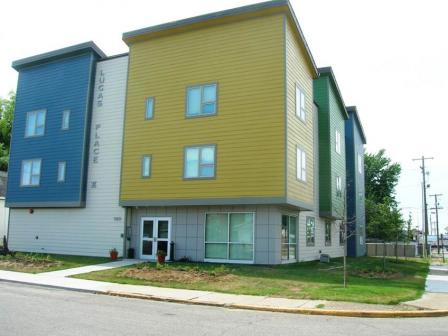 Jacobsville Neighborhood Soil ContaminationThe 4.5-square mile Jacobsville Neighborhood Soil Contamination Superfund site is located in Evansville, Indiana. The site includes commercial businesses, manufacturing facilities, hospitals, schools and residences. Several manufacturing companies operated at the site beginning in the 1880s. Windborne particulates from manufacturing operations resulted in widespread contamination throughout the community. EPA placed the site on the Superfund program’s National Priorities List (NPL) in 2004. Cleanup activities include removal of contaminated soil and backfilling these areas with clean soil. Clean also included restoration of residential properties. In 2009, the site received almost $6.6 million in American Reinvestment and Recovery Act (ARRA) funds for cleanup and restoration work at the site. As of June 2015, workers had cleaned up about 1,600 homes and sampled about 3,000 properties. When the multi-year cleanup first began in 2010, EPA’s remediation of two vacant lots in the Jacobsville neighborhood allowed a local non-profit organization, ECHO Housing Corporation, to construct a 26-unit residential building for homeless and disabled military veterans. ECHO Housing Corporation began development on the cleaned properties in 2010 and completed construction in mid-2011. Residents moved into the building in November 2011. Currently, EPA is working with ECHO Housing Corporation on another residential development for Indiana veterans. EPA is also working with two non-profit groups – Hope In Evansville and Habitat for Humanity – to allow them to construct other affordable housing options in Evansville. After EPA cleaned up a local park in the Jacobsville neighborhood, a local Eagle Scout added landscaping and playground equipment. EPA is also supporting community gardens. The cleanup effort has not displaced any residents and offers opportunities to support residential and community initiatives.
Jacobsville Neighborhood Soil ContaminationThe 4.5-square mile Jacobsville Neighborhood Soil Contamination Superfund site is located in Evansville, Indiana. The site includes commercial businesses, manufacturing facilities, hospitals, schools and residences. Several manufacturing companies operated at the site beginning in the 1880s. Windborne particulates from manufacturing operations resulted in widespread contamination throughout the community. EPA placed the site on the Superfund program’s National Priorities List (NPL) in 2004. Cleanup activities include removal of contaminated soil and backfilling these areas with clean soil. Clean also included restoration of residential properties. In 2009, the site received almost $6.6 million in American Reinvestment and Recovery Act (ARRA) funds for cleanup and restoration work at the site. As of June 2015, workers had cleaned up about 1,600 homes and sampled about 3,000 properties. When the multi-year cleanup first began in 2010, EPA’s remediation of two vacant lots in the Jacobsville neighborhood allowed a local non-profit organization, ECHO Housing Corporation, to construct a 26-unit residential building for homeless and disabled military veterans. ECHO Housing Corporation began development on the cleaned properties in 2010 and completed construction in mid-2011. Residents moved into the building in November 2011. Currently, EPA is working with ECHO Housing Corporation on another residential development for Indiana veterans. EPA is also working with two non-profit groups – Hope In Evansville and Habitat for Humanity – to allow them to construct other affordable housing options in Evansville. After EPA cleaned up a local park in the Jacobsville neighborhood, a local Eagle Scout added landscaping and playground equipment. EPA is also supporting community gardens. The cleanup effort has not displaced any residents and offers opportunities to support residential and community initiatives.
For more information:
Main Street Well Field
The 48-acre Main Street Well Field Superfund site in Elkhart, Indiana includes a 15-well municipal well field. The site is the largest of three well fields owned by the City of Elkhart and supplies the majority of drinking water for city residents. In 1983, EPA identified groundwater contamination likely from nearby industrial operations. The same year, EPA placed the site on the Superfund program’s National Priorities List (NPL). Under EPA oversight, the site’s potentially responsible parties (PRPs) installed a groundwater extraction system and an air stripper system, and constructed a soil vapor extraction (SVE) system. The SVE system achieved cleanup goals in 2000. In 2001, the City added biking, jogging and walking trails to the site for use by the general public. Afterward, the City of Elkhart enhanced the western portion of the site by constructing the Wellfield Botanic Gardens by adding flower gardens, fish ponds and artwork. The Wellfield Botanic Gardens is an environmental project that establishes a buffer zone between land and water using native plants while providing a natural habitat to ducks, geese, birds and other wildlife. In 2006, several of the PRPs declared bankruptcy. The City of Elkhart and the West Side PRP group oversee groundwater monitoring to ensure continued delivery of safe drinking water to local residents.
For more information:
Neal's Dump (Spencer)
The 1-acre Neal's Dump (Spencer) Superfund site, located near Spencer, Indiana operated as a disposal area for industrial wastes from 1966 until 1971. Items disposed of at the site include electrical capacitors, capacitor parts, contaminated rags and sawdust. Disposal activities resulted in the contamination of soil and groundwater at the site. EPA placed the site on the Superfund program’s National Priorities List (NPL) in 1986. The site’s potentially responsible party (PRP) completed cleanup activities to residential standards under EPA’s oversight. Cleanup activities included the removal of contaminated materials and capacitors and disposal of these materials at an off-site facility. The PRP backfilled and reseeded the excavated areas. In 1999, EPA deleted the site from the NPL. The PRP completed cleanup activities at the site in 2003. A portion of the site includes the backyard of a private residence, which remains in continued use.
For more information:
Poer Farm
The 5-acre Poer Farm Superfund site is located in a rural area about 3 miles north of Wilkinson, Indiana. From 1973 until 1983, site owners stored drums of solvents and paint resins at the site. Leaking drums resulted in soil contamination. EPA removed all waste and soil from the drum storage areas on the site. EPA disposed of contaminated materials at off-site facilities. EPA finalized the site on the Superfund program’s National Priorities List (NPL) in 1984. Because EPA had removed contamination, no further cleanup was necessary and EPA deleted the site from the NPL in 1991. A portion of the site has returned to agricultural use to produce hay for livestock.
For more information:
Prestolite Battery Division
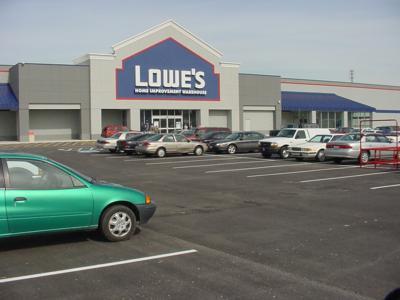 Prestolite Battery DivisionThe 18-acre Prestolite Battery Division Superfund site in Knox County, Indiana, operated as a battery manufacturing facility from 1945 to 1985. Site operators disposed of lead-contaminated sludge and wastewater in a sewer system. Improper waste handling practices and spills contaminated air, soil and surface water on site. The sewer system leaked wastewater which contaminated groundwater. EPA placed the site on the Superfund program’s National Priorities List (NPL) in 1989. Cleanup workers removed soil and monitored groundwater. In 1996, EPA entered into a Prospective Purchaser Agreement (PPA) with a local real estate developer. The PPA resulted in commercial redevelopment at the site. Available infrastructure next to the site and the site’s location along a high-traffic roadway also encouraged reuse. Businesses began to open in 2001. Today, commercial businesses at the site include a home improvement center, restaurants and a hotel.
Prestolite Battery DivisionThe 18-acre Prestolite Battery Division Superfund site in Knox County, Indiana, operated as a battery manufacturing facility from 1945 to 1985. Site operators disposed of lead-contaminated sludge and wastewater in a sewer system. Improper waste handling practices and spills contaminated air, soil and surface water on site. The sewer system leaked wastewater which contaminated groundwater. EPA placed the site on the Superfund program’s National Priorities List (NPL) in 1989. Cleanup workers removed soil and monitored groundwater. In 1996, EPA entered into a Prospective Purchaser Agreement (PPA) with a local real estate developer. The PPA resulted in commercial redevelopment at the site. Available infrastructure next to the site and the site’s location along a high-traffic roadway also encouraged reuse. Businesses began to open in 2001. Today, commercial businesses at the site include a home improvement center, restaurants and a hotel.
For more information:
Reilly Tar & Chemical Corp. (Indianapolis Plant)
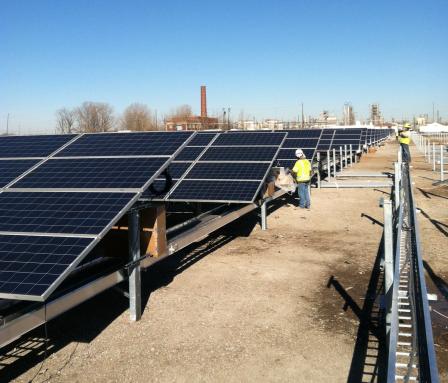 Reilly Tar & Chemical Corp. (Indianapolis Plant)The 120-acre Reilly Tar & Chemical Corp. (Indianapolis Plant) Superfund site is located in Indianapolis, Indiana. The site has operated as a specialty chemicals production facility since the early 1950s. Until 1972, a coal-tar refining and wood treatment facility that used creosote also operated at the site. Site operators used a trench, a landfill and several pits on site to dispose of wastes generated on site. A lime pond received boiler cooling water. Waste handling practices resulted in groundwater and soil contamination. EPA placed the site on the Superfund program’s National Priorities List (NPL) in 1984. Cleanup involved extracting and containing groundwater. EPA’s cleanup plan also included constructing a permeable cover over the wood treatment and storage area and removing or treating contaminated soil. Groundwater monitoring is ongoing. Chemical operations continue at the site. Developer Hanwha Q CELLS constructed a 10.8 megawatt solar energy generation facility on the southern 43-acres of the site. The Maywood Solar Farm is the first utility scale solar farm to be constructed on a Superfund site in Region 5. The facility began operation in February 2014.
Reilly Tar & Chemical Corp. (Indianapolis Plant)The 120-acre Reilly Tar & Chemical Corp. (Indianapolis Plant) Superfund site is located in Indianapolis, Indiana. The site has operated as a specialty chemicals production facility since the early 1950s. Until 1972, a coal-tar refining and wood treatment facility that used creosote also operated at the site. Site operators used a trench, a landfill and several pits on site to dispose of wastes generated on site. A lime pond received boiler cooling water. Waste handling practices resulted in groundwater and soil contamination. EPA placed the site on the Superfund program’s National Priorities List (NPL) in 1984. Cleanup involved extracting and containing groundwater. EPA’s cleanup plan also included constructing a permeable cover over the wood treatment and storage area and removing or treating contaminated soil. Groundwater monitoring is ongoing. Chemical operations continue at the site. Developer Hanwha Q CELLS constructed a 10.8 megawatt solar energy generation facility on the southern 43-acres of the site. The Maywood Solar Farm is the first utility scale solar farm to be constructed on a Superfund site in Region 5. The facility began operation in February 2014.
For more information:
- Utility-Scale Solar Energy Development: Reilly Tar & Chemical Corp. (Indianapolis Plant) Superfund Site (PDF) (14 pp, 5.8 MB, About PDF)
- Superfund Site Profile Page
Southside Sanitary Landfill
 Southside Sanitary LandfillOnce considered a hazard to human health and the environment, the 324-acre Southside Sanitary Landfill Superfund site in Indianapolis, Indiana, now provides alternative energy production and green space for the community, in addition to a safely operating landfill. Landfill operations began at the site in 1971. In 1984, sampling identified groundwater contamination from site activities. EPA added the site to the Superfund program’s National Priorities List (NPL) in 1989. Cleanup activities included a landfill liquid collection and treatment system and groundwater monitoring. EPA deleted the site from the NPL in 1997. Crossroads Greenhouses, one of the largest methane-powered greenhouses in the United States, has captured more the 2.2 million cubic feet of methane gas each day from the site since 1998. Decomposing waste at the site provides all of the energy used in the 6.5-acre greenhouse. Landfill gas recovery wells and an intricate pipeline system collect and transport methane gas from the site to the neighboring greenhouse. In addition, the Rolls Royce Allison Aircraft Engine Plant began obtaining methane gas from the site’s landfill in 1998. Because methane burns much more cleanly than other fuels, the use of this energy source has reduced nitrogen oxide emissions from the plant. In 1999, a nine-hole golf course opened on the site. In 2003, the landfill donated land for use by the Indianapolis School Board for outside environmental education. Local schoolchildren tour the site as part of their curriculum on landfill science.
Southside Sanitary LandfillOnce considered a hazard to human health and the environment, the 324-acre Southside Sanitary Landfill Superfund site in Indianapolis, Indiana, now provides alternative energy production and green space for the community, in addition to a safely operating landfill. Landfill operations began at the site in 1971. In 1984, sampling identified groundwater contamination from site activities. EPA added the site to the Superfund program’s National Priorities List (NPL) in 1989. Cleanup activities included a landfill liquid collection and treatment system and groundwater monitoring. EPA deleted the site from the NPL in 1997. Crossroads Greenhouses, one of the largest methane-powered greenhouses in the United States, has captured more the 2.2 million cubic feet of methane gas each day from the site since 1998. Decomposing waste at the site provides all of the energy used in the 6.5-acre greenhouse. Landfill gas recovery wells and an intricate pipeline system collect and transport methane gas from the site to the neighboring greenhouse. In addition, the Rolls Royce Allison Aircraft Engine Plant began obtaining methane gas from the site’s landfill in 1998. Because methane burns much more cleanly than other fuels, the use of this energy source has reduced nitrogen oxide emissions from the plant. In 1999, a nine-hole golf course opened on the site. In 2003, the landfill donated land for use by the Indianapolis School Board for outside environmental education. Local schoolchildren tour the site as part of their curriculum on landfill science.
For more information:
- Reuse and the Benefit to Community: Southside Sanitary Landfill Case Study (2011) (PDF) (6 pp, 255 K, About PDF)
- Redevelopment of the Southside Sanitary Landfill Superfund Site (PDF)(1 pg, 97 K)
- Superfund Site Profile Page
Whiteford Sales & Service Inc./Nationalease
The 11-acre Whiteford Sales and Service, Inc./Nationalease Superfund site is located in South Bend, Indiana. From 1967 to 1983, a truck washing and degreasing facility operated on site. During these years, waste water discharged into three dry wells on site, resulting in the contamination of area soil and groundwater. In 1980, St. Joseph County purchased the site for use in the planned realignment of the adjacent street and construction of an overpass. In 1983, the County used soil from the site to build the new overpass. Engineers soon discovered the three dry wells and contaminated soil. The potentially responsible party (PRP) removed and properly disposed of the sludge and surrounding contaminated soil from the three dry wells. In 1990, EPA added the site to the Superfund program’s National Priorities List (NPL). EPA determined that all contamination had been removed and deleted the site from the NPL in September 1996. Today, the property serves as a stormwater retention basin.
For more information:
